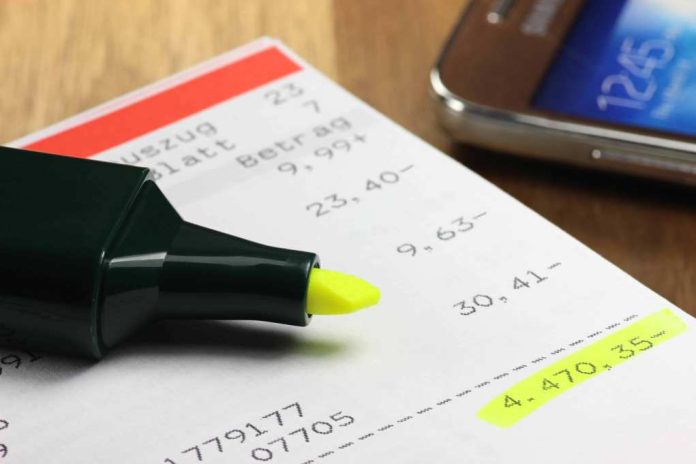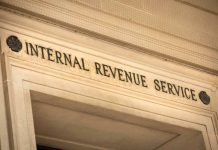
Overdrawing your account can catch you by surprise. It is stressful when you see your account in the negative. It’s also hard to figure out what to do when you’re overwhelmed by this! Luckily, if you find that your account gets this low, there are tips that can help you better handle the situation. However, a great piece of advice is to avoid getting your account that low in the first place. This is why we will also give tips on how to keep your account well-maintained and not in the negatives.
What To Do When Your Account Goes Negative?
Some helpful tips that you want to consider if your account gets overdrawn include the following:
- Make Sure You Know About Your Bank’s Overdraft Fees
- Do Not Use the Account
- Get a Clear Understanding
- Save Until You’re Out of the Negatives
- Talk to Your Bank
- Try to Avoid the Negatives in the First Place
Make Sure You Know About Your Bank’s Overdraft Fees
When your account is overdrawn, you want to make sure you understand the situation. That is why you should understand what your bank’s overdraft fees are. A majority of banks will charge this fee which happens when your account is overdrawn by a specific amount. There is no general rule of thumb, so you will need to reach out to your bank for more information. These fees can make the process of getting your account back in shape even more stressful. That’s because you will be responsible for paying for these fees on top of what it takes to get your account back into the positive. These fees typically cost between $30 to $35.
Do Not Use The Account
It can be annoying to stop spending money on your account, especially when you have automatic payments in place. However, when you stop using your account, you don’t dig a deeper hole for yourself. For example, if your account is overdrawn by $50, it is better to stay at $50 than to rack up to $200 that you need to repay just to bring your balance to $0! Besides that, continuously using an overdrawn account can lead to even more fees.
It’s important to keep in mind that if you get a paycheck, you may want to hold off on putting it into your account if you have bills you need to pay. That’s because the funds will go towards the overdrawn amount. If you need enough to handle other expenses, like a light bill, then you will want to consider a check-cashing service.
Get a Clear Understanding
When your account is overdrawn, it is important to understand the numbers involved. You want to figure out how much money you need to get your balance back to zero as well as start getting a security cushion in place. You will also want to consider any pending charges and overdraft fees that may impact that balance number.
Save Until You’re Out of the Negatives
Now that you have a clear understanding of what your account needs, you will want to focus on getting your account back to where it should be. Typically, the longer you wait to get your account balance out of the negatives then the higher likelihood there is the bank will charge you more fees and eventually close down your account. Getting your account balance up quickly can be challenging, but you may be able to get there faster by selling items you don’t need.
Talk to Your Bank
Your bank may be more understanding than you realize. This means you have the chance to have fees waived. For example, if you haven’t overdrawn your account before, then your bank may waive the fee. They have no obligation to do it, but they may determine that they can make the refund! That’s why you’ll want to be nice, even if you are mad about your overdrawn account.
However, you may also benefit from talking to your bank if you need a little bit of support. Your bank may be able to set up a payment plan with you that can help you better manage what you have due in a way that you can handle.
Try to Avoid the Negatives in the First Place
While the tips above are great to help you once you get into the negatives, a great piece of advice is to avoid getting there in the first place! There are some tips that you can keep in mind that can help you from overdrawing your account. A few of these tips include:
- Get a Budget Together
- Keep Up with Your Budget
- Opt-In to Low Balance Notifications
- Do Not Sign Up for Overdraft Programs
Get a Budget Together
One of the most important parts of your financial health is having a budget in place! A budget should look at the money you bring in, versus the money you spend. For example, let’s say you make $2,000 per month. You will not only want to know your income, but you will want to know what you are spending it on. That means listing out your bills and expenses for the month! Some expenses you may deal with include:
- Phone bill: $125
- Streaming services: $50
- Groceries: $250
- Car note: $200
- Rent: $1,000
These expenses add up! So, let’s say at the end of it all, you spend $1,625 on bills every month. This means if you are making $2,000, you only have $375 leftover that can go towards savings or goals. Breaking down your budget allows you to see the big picture of what you’re dealing with when it comes to your finances.
Keep Up with Your Budget
Now that you know the basics of your budget, you will want to keep up to make sure you stick with it! That means tracking your income when you get paid and any purchases you make. This will help you be aware of what’s going on in your account so you can make better decisions! Plus, you will know when your account is getting low, so it’s less likely to be a surprise.
Opt-in to Low Balance Notifications
A majority of banks give consumers the option to sign up for notifications. One specific type of notification is a low-balance alert. So, even though by tracking your spending you can be aware of your money, this adds an extra layer of protection!
Do Not Sign Up for Overdraft Programs
It’s important to keep in mind that the exact details on overdraft fees will vary depending on the bank. However, a lot of banks will only charge an overdraft fee if the consumer signs up for the bank’s overdraft program. Luckily, consumers have the ability to withdraw from the program. Without the protection of an overdraft program, the transactions that try to go through on a negative account will be declined.
Bottom Line
It can feel overwhelming and stressful when your accounts are negative. There are some tips to know that can be helpful. If your account is overdrawn, you will want to keep in mind the following:
- Make Sure You Know About Your Bank’s Overdraft Fees
- Do Not Use the Account
- Get a Clear Understanding
- Save Until You’re Out of the Negatives
- Talk to Your Bank
- Try to Avoid the Negatives in the First Place
When it comes to avoiding a negative account in the first place, you will want to make sure that you:
- Get a Budget Together
- Keep Up with Your Budget
- Opt-In to Low Balance Notifications
- Do Not Sign Up for Overdraft Programs
Handling an overdrawn account may seem impossible, but it’s more manageable than you may realize!
















